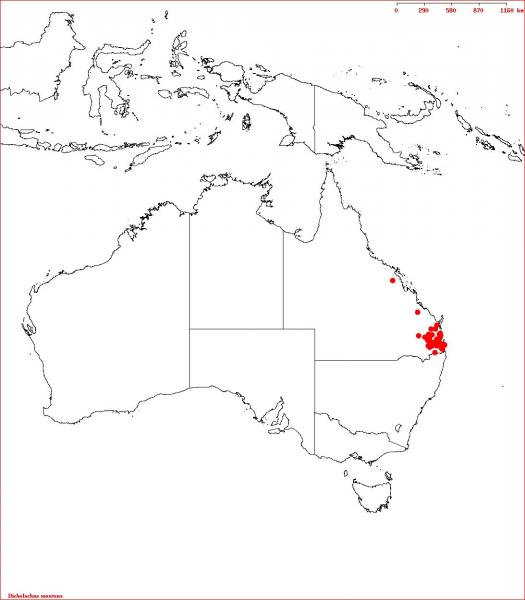Dichelachne montana Endl. Fl. Norfolk. 20
(1833).
Classification. (GPWG 2001) : Subfamily Pooideae.
Tribe Poeae.
Key references
(books and floras): [2002] D.Sharp & B.K.Simon, AusGrass, Grasses of
Australia
(as D. sp. A & B),
[2008] S.W.L.Jacobs, R.D.B.Walley & D.J.B.Wheeler, Grasses of New South Wales
(210), [2009] A.Wilson (ed.). Flora of Australia, Vol 44A. Poaceae 2
(217).
Illustrations:
[2008] S.W.L.Jacobs, R.D.B.Whalley & D.J.B.Wheeler, Grasses of New South
Wales, 4th edn (210).
Habit.
Perennial. Culms 50–110 cm tall. Ligule an eciliate membrane, entire or
bilobed. Leaf-blades 6.5–31 cm long, 2–5 mm wide.
Inflorescence.
Inflorescence compound, a panicle. Panicle 3.5–17 cm long.
Spikelets.
Fertile spikelets 1-flowered, comprising 1 fertile floret(s), with a barren
rachilla extension, laterally compressed, 3.6–5.3 mm long.
Glumes. Lower
glume lanceolate. Lower glume apex muticous or mucronate. Upper glume
lanceolate, 3.6–5.3(–6) mm long.
Florets.
Fertile lemma (2.6–)3–4(–5) mm long, without keel. Lemma apex dentate, awned.
Median (principal) awn dorsal, 10–20 mm long overall, with a twisted column.
Anthers (1–)3. Grain 1.6–1.8 mm long.
Continental
Distribution: Australasia.
Australian
Distribution: Queensland, New South Wales, Victoria,
Tasmania.
Queensland: Moreton. New South Wales: North
Coast, Central
Coast, South Coast,
Northern Tablelands, Central Tablelands, Southern Tablelands, North-Western
Slopes, Central-Western Slopes.
Notes. Endemic. New Zealand.
Usually on stony ground in dry eucalypt woodland. Flowers Nov.-June. Fruits
Jan.-Apr.-?.

